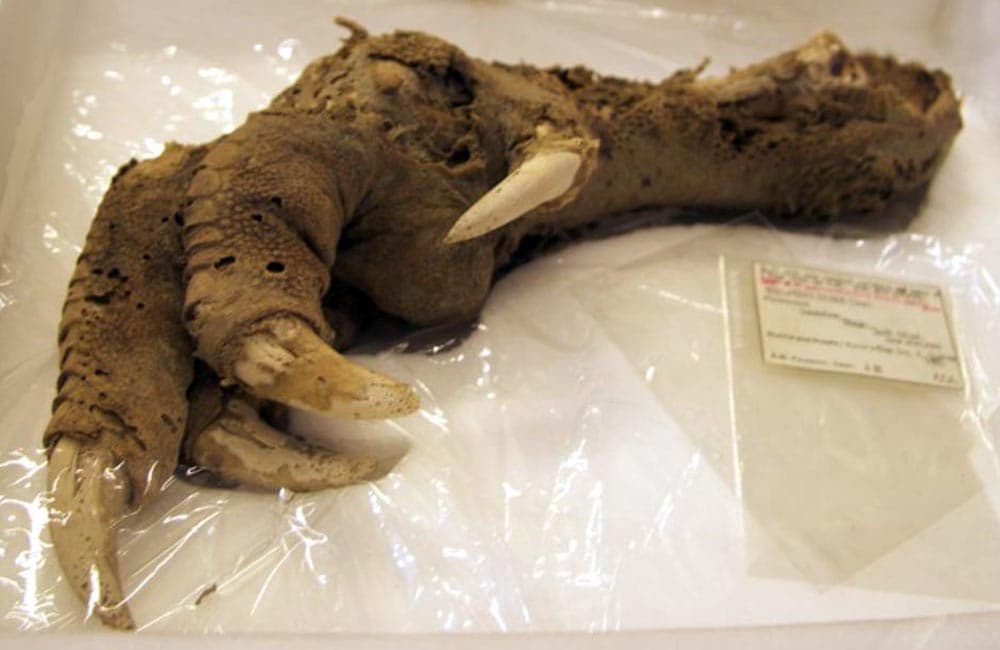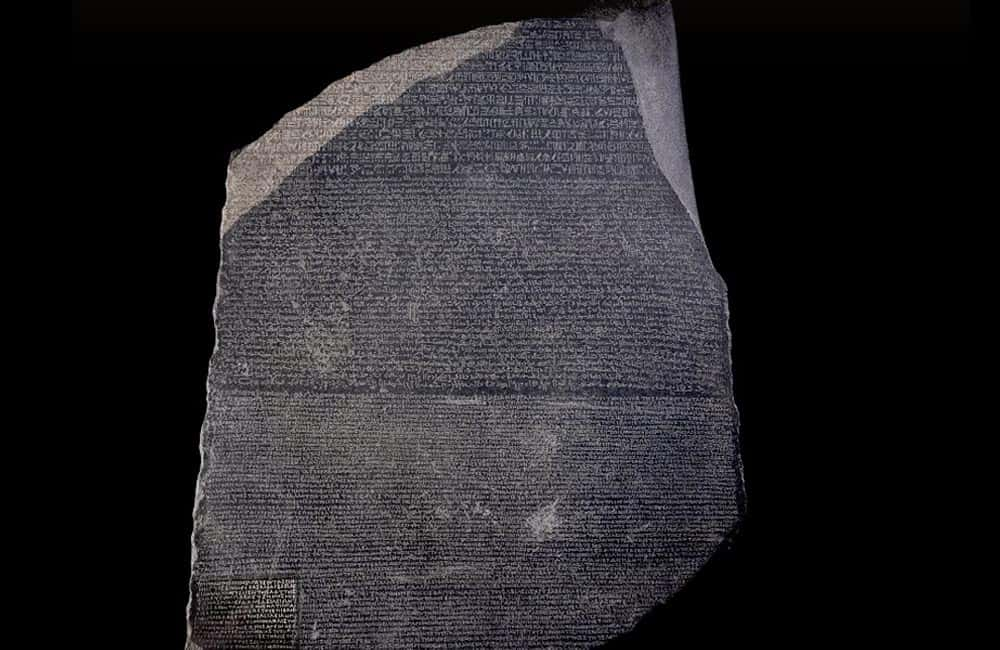Mount Owen Moa
The extinction of this flightless bird took place in 1500 CE or so. Endemic to New Zealand, its preserved claw was discovered intact with scaly skin and flesh inside a huge cave in Mount Owen. They say that the claw looked like it came from an animal that only died the previous day. It was astounding to see it in such good condition even though it was already 3,300 years old by then. The upland Moa was among the smallest of the species at only a height of 4.2 feet. It did not come with a tail or wings even though it had feathers. The foot was likely preserved via desiccation since it died with a dry wind filling the cave. Ever since it was discovered, they were able to find a couple of other Moa remains.

Mount Owen Moa
The Rosetta Stone
In 1799, Napoleon’s army found the Rosetta Stone in a town called Rashid in the Nile Delta. Three years later, it made its way to England. It is now found in the British Museum, where it is probably the most famous object on display. The wall is incredibly important as it features text that has been inscribed thrice in a variety of ways. It used different scripts: Ancient Greek, hieroglyphs, and a native Egyptian one called Demotic. This incredible find helped expand what we know about ancient Egyptian culture and language. After all, this made it possible to decipher hieroglyphics and understand what the inscription was talking about.

The Rosetta Stone


